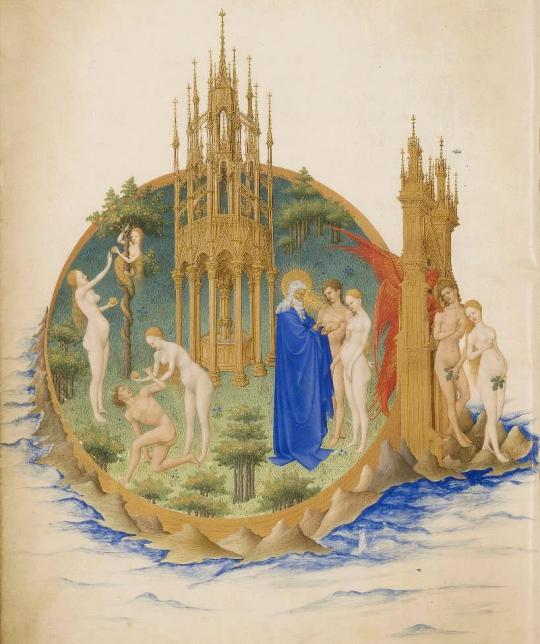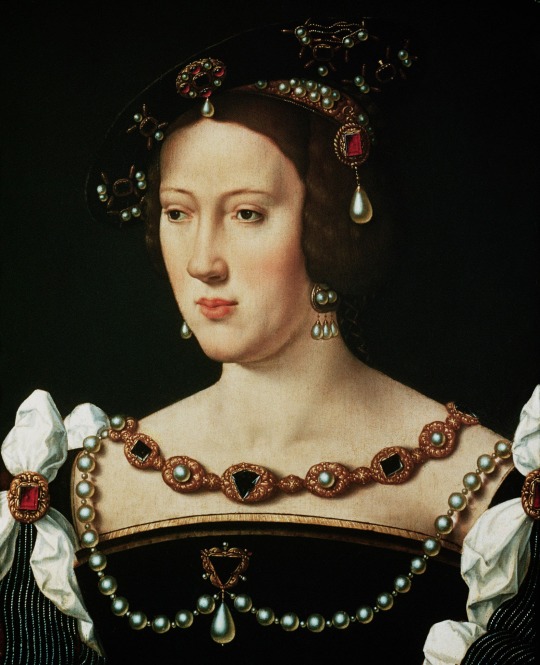#Musée Condé
Text

Les Cuirassiers, 1805. Avant la Charge (detail)
by Jean-Louis-Ernest Meissonier
#cuirassiers#1805#before the charge#cavalry charge#cavalry#napoleonic#art#painting#history#europe#european#france#french#napoleonic wars#jean-louis-ernest meissonier#musée condé#château de chantilly
129 notes
·
View notes
Photo

Gaston of France, Duke of Orléans by Anthony van Dyck.
#Musée Condé#royaume de france#maison de bourbon#maison d'orleans#maison de bourbon orleans#bourbon orleans#gaston de france#duc d'orleans#anthony van dyck#monsieur
5 notes
·
View notes
Text


#Chantilly castle#enluminure#illumination#gems#ancient books#cabinet#Cabinet des Livres#France#medieval manuscripts#13th century#musée de Condé#wounded Christ#Psautier-heures à l'usage de Brême#Suscipe sancta trinitas#Germany#Latin#Psautier d'Ingeburge#Psalterium Ingeburgae regina#Psalterium#psalter#library
3 notes
·
View notes
Photo

EXPOSITION | Ingres, l'artiste et ses princes ➽ https://bit.ly/Exposition-Ingres Artiste à succès de la première moitié du XIXe siècle, Jean-Auguste-Dominique Ingres (1780-1867) est un peintre inclassable et souvent visionnaire. Derrière son apparent classicisme transparaissent une originalité et une recherche de la perfection qui continuent à fasciner
3 notes
·
View notes
Text


flying tortoise
in an illuminated collection of fables, swabia, ca. 1480
source: Chantilly, Musée Condé, Ms. 680 (olim 1389), fol. 85v
969 notes
·
View notes
Text

Portrait of a woman said to be by Simonetta Vespucci (c.1490).
Piero di Cosimo (Italian, 1462-1522).
Oil on panel. Musée Condé, Chantilly.
194 notes
·
View notes
Photo

MWW Artwork of the Day (1/25/23)
Limbourg Brothers (Dutch, fl. 1385–1416)
Les Très Riches Heures du Duc de Berry: Fall and the Expulsion from Paradise (c. 1416)
Tempera on vellum, 29.4 x 21 cm.
Musée Condé, Chantilly
The picture has no frame, the border of the whole representation being provided by the wall of Paradise. It is from this frame that Adam and Eve have to enter a world which has no boundaries, in which the very shores of the sea vanish, apparently turning into clouds in the infinity of space. Although the ground of the Garden of Eden is stretched behind the figures like a tapestry, it is not merely a decorative surface, since the gradual darkening of the fresh green lawn conveys spatiality. In fact the hardly discernible nuances of green seem to lend the circle a spherical quality. The painter's intention in this respect is also evinced by the use of perspective in the delineation of the fountain and also of the gate (for example, the roof of the fountain is seen and represented from below, whereas its hexagonal basin appears as if seen from above; indeed, the latter does not turn as steeply into the plane of the picture as does the ground itself).
For more Medieval illuminated manuscripts, see this MWW Special Collection:
https://www.facebook.com/media/set/?vanity=TheMuseumWithoutWalls&set=a.419770264795015
145 notes
·
View notes
Text
Marguerite de Navarre’s discussion of courtly love, La Coche (The Coach) (1541–42), was dedicated to [Anne de Pisseleu]. The relations between Marguerite and Anne were complex. Sometimes described as rivals, they often shared tactical objectives in court politics and, though Marguerite was waspish about many others in her talks with foreign envoys, she never was about Anne. There was clearly also some sympathy between them in matters of religion, which in Anne’s case developed later into Protestantism. Marguerite’s poem is a discussion about the miseries and pains of love, which are submitted by Marguerite to the arbitration of Madame d’Étampes in the absence of her brother the king. The text also contains an extended eulogy of Anne (though not named directly) in which she is likened to ‘a sun midst stars who spares nothing for her friends, nor stoops to vengeance on her foes’. Marguerite addresses her as cousin and mistress. There are several illuminated copies, the best known in the Musée Condé showing Marguerite presenting the work to Anne."
-David Potter, "The Life and After-Life of a Royal Mistress: Anne de Pisseleu, Duchess of Étampes"
#historicwomendaily#anne de pisseleu#french history#16th century#my list#Marguerite of Angoulême#marguerite de navarre#marguerite de valois#I don't know what to tag her :(#Anne and Marguerite (+Diane de France) are the most interesting women of 16th century France to me#so I love that both of them were allies and seem to have gotten along#my post
16 notes
·
View notes
Text

Joos van Cleve (Dutch, c. 1485-1540/1541) • Portrait of Eleanor of Austria • c. 1530 • Musée Condé, Oise, France


Details
The Resplendent Outfit: The outrageous, extravagant, sometimes humorous and often beautiful outfits worn by subjects of old portraits; captioned, as an attempt at satire; a little history occasionally thrown in the mix.
Outrageous
Extravagant ✅️
Humorous
Beautiful ✅️
#art#painting#portrait#royal portraits#eleanor of austria#joos van cleve#beautiful jewelry in paintings#16th century european art#royal portrait#dutch artist#dutch art#the resplendent outfit#art blog#historical portrait#art appreciation
22 notes
·
View notes
Text

Limbourg Brothers
Month of April from The Very Rich Hours of the Duke of Berry or Très Riches Heures, 1412-1416
Musée Condé, Chantilly
11 notes
·
View notes
Photo

COLOMBE, Jean
Les très riches heures du Duc de Berry: Novembre (November)
1412-16
Manuscript (Ms. 65), 294 x 210 mm
Musée Condé, Chantilly
103 notes
·
View notes
Text

Jean Colombe, The Pentecost from Les Très Riches Heures de Jean, duc de Berry (1485). :: The Virgin surrounded by the apostles receives the holy spirit in a basilica
Musée Condé, Chantilly Ms 65/1284 f.79r :: (Robert Scott Horton)
* * * *
Pentecost is an invitation to dream. For when a community of faith quits dreaming dreams, it has little to offer either its members or the wider world.
Like any good dream, these dreams involve adopting a new perspective on what's possible, rousing our creativity to free us from conventional expectations. They help us see that maybe what we thought was outlandish actually lies within reach. Maybe I can find freedom from what binds me. Maybe there can be justice. Maybe I can make a difference. Maybe a person's value isn't determined by her income. Maybe the future of our economy or our society or our planet is not yet determined. Maybe God is here with me, even if my current struggles never go away.
~ Matthew L. Skinner, a professor of New Testament at Luther Seminary Illustration : What We Do For Love ~ Catherine G Mcelroy [h/t Paul Corby]
3 notes
·
View notes
Text

Jean Gossaert (copia): «Retrato de Mencía de Mendoza», 1532-1535. Musée Condé, Chantilly.
She was Marchioness of Zenete, Countess of Nassau, Duchess of Calabria and Vicereine of Valencia
She was a leading figure of the Renaissance in the Netherlands and known for her progressive opinions of the education of women.
A disciple of Juan Luis Vives, she was an admirer of Erasmus of Rotterdam. Mencia de Mendoza was called the most Erasmian woman in Spain.
However, the artistic patronage of Mencía de Mendoza did not stop at acquiring works of art, but included more public initiatives, such as the University of Valencia project or the patronage of students from Valencia, on whom she bestowed grants for studying at different Spanish and European universities. At the same time, the Marchioness of Zenete emerges as a key figure for analysing artistic‐cultural relations between Spain and the Low Countries in the first half of the sixteenth century. Her relationship with other Spaniards, both those living outside Spain, such as Felipe de Guevara or Juan Luis Vives, and those within, who acted as her intermediaries in the purchase of works of art, was also important in this respect. As patron and intermediary, Mencía de Mendoza acted as ‘cultural ambassador’ for Spanish art in Breda and for Flemish art in Castile and Aragon.
Noelia García Pérez, Mencía de Mendoza, Marquesa de Zenete: an art collector in sixteenth‐century Spain
9 notes
·
View notes
Audio
Matheus de Sancto Johanne (– ca.1391)
— Je chante un chant en merencoliant (Rondeau - isorhythmic) [(fol.16r) MS 564 (Chantilly Codex). Musée Condé, Chantilly, France]
Je chante ung chant en merencoliant.
a cort de plour en ris desacordé.
Ma dame quant de s'amor vois priant.
Doucour n'i truis je, ne nuil beau semblant.
s'en sui mort quant ne m'en voy acorder.
— Inclite flos orti Gebennensis (Ballade)
[(fol.41r) MS 564 (Chantilly Codex). Musée Condé, Chantilly, France] [(fol.15r) MS {alpha}.M.5.24 (Codex Modena A; ModA) Biblioteca Estense, Modena, Italy]
Inclite flos orti Gebenensis
Cuius odor balsamis dulcior,
Prestantibus roribus immensis
Orbem replet ceteris altior.
Salveque iocundare nec ad teram velis
declinare propter paucum ventum.
Nam dicitur: In adversis virtus perficitur
_
CODEX CHANTILLY vol.3
Tetraktys
(2016, Olive Music – KTC 1917)
9 notes
·
View notes
Text
The Garden of Eden c.1416 by the Limbourg Brothers.

📍Musée Condé, Chantilly, France.
The Limbourg Brothers (Herman, Paul and Johan) were famous Dutch miniature painters. They were active in early 15th century France and Burgundy and worked in the International Gothic style. They came from an artistic family and their uncle was a painter for the Duke of Burgundy. When the Duke died in 1404, the future was uncertain for the brothers until the Duke of Berry took them on. It is believed that all three brothers died in a wave of the plague that hit Europe in 1416. The brothers' legacy was lost in time until the mid 19th century when the Duke of Amale purchased the 'Trés Riches Heures' in 1856.
International Gothic is a period of Gothic art that began in Burgundy, France, and Northern Italy in the late 14th and early 15th century. Initially, it was a style of courtly sophistication, but more robust versions spread to art commissioned by the emerging mercantile classes and lesser nobility. Natural forms are smoothed away, leaving behind realism, reflecting the pageantry of courtly life. Artists and portable works, such as illuminated manuscripts, travelled around Europe and were stimulated by the growing rivalry of the European royal courts.
The miniature, from Trés Riches Heures depicts the fall and expulsion from Paradise. In the centre stands an ornate Late Gothic edifice of the Fountain of Life. On the left we see the temptation; Satan, with the lower half of a serpent, tempts Eve, handing apples over to her, who, in turn is seen handing one of the apples over to Adam. God reproaches them in the centre of the scene, the ray of his halo emphasises his words while counting the sins on his hands. Adam points at Eve, who hides her sinful hand behind her back. In the last scene on the right a fiery angel ushers them out of Paradise as they look back through the gate.
2 notes
·
View notes
Text

"the dog and its reflection"
in an illustrated collection of fables, swabia, ca. 1480
source: Chantilly, Musée Condé, Ms. 680 (olim 1389), fol. 20v
192 notes
·
View notes